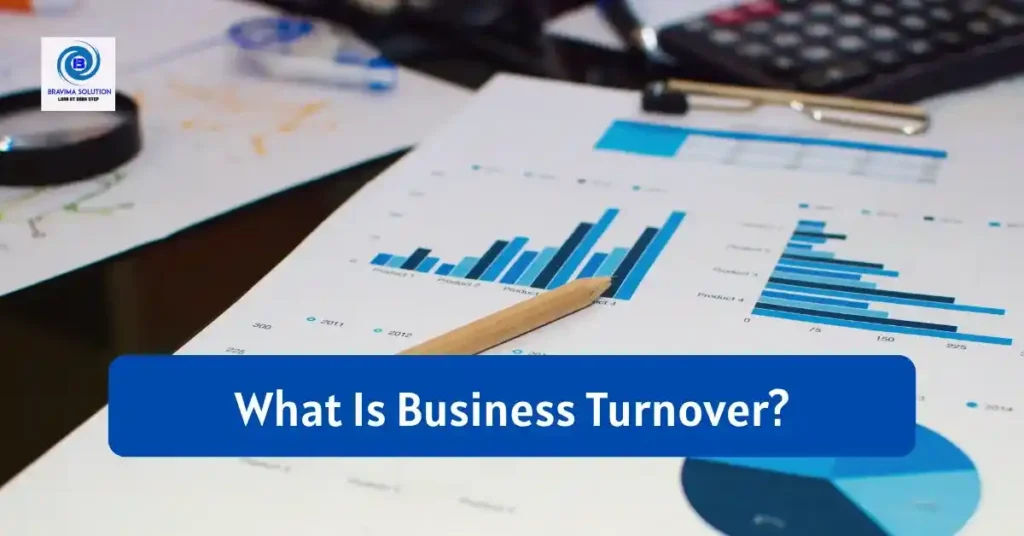
The Goods and Services Tax (GST) is India’s landmark indirect tax reform introduced in July 2017, replacing numerous central and state levies like excise, VAT, and service tax. As of 2025, GST remains a multi-tiered system with four main tax slabs: 0%, 5%, 12%, 18%, and 28%, used to effectively categorize goods and services based on their nature and necessity
In this comprehensive guide, we’ll explore:
- The rationale and structure of the GST regime
- A breakdown of each slab, with examples
- The impact on businesses—pricing, compliance, and credit chain
- How to classify your offerings and stay compliant
- GST return types and invoicing
- Strategic implications for pricing, cash flow, and loans
1. Why GST Still Matters in 2025
GST remains India’s primary indirect tax system due to the following reasons:
- Unified tax regime: Replaced multiple indirect levies with a single, destination-based tax.
- Reduced tax cascading: Eliminated the “tax-on-tax” effect through input tax credits.
- Ease of compliance & transparency: Digital filing, standardized invoicing, and national coordination via the GST portal.
- Tailored tax burden: Essential goods enjoy 0% or 5% slabs, mid-use products at 12% or 18%, luxury goods at 28%
Historical Context
- GST Act introduced: March 29, 2017
- Implemented: July 1, 2017
It consolidates taxation at the point of consumption, ensuring uniform application and easing interstate business.
2. GST Slab Table (2025 Overview)

Best SME/MSME Loan offers are just a click away
3. Deep Dive: Each GST Slab
0% Slab – Essential Goods & Services
These are basic items exempt from GST to support affordability and welfare:
- Unprocessed food: Fresh fruits, vegetables, milk, eggs
- Health and education: School/college tuition, hospital services
- Others: Salt, unbranded grains, children’s books
💡 Why it matters: No tax leads to competitive pricing and vital for low-income consumers.
5% Slab – Everyday Essentials
Low-tax slab for commonly consumed packaged goods and services:
- Packaged foods: Sugar, edible oils, tea, coffee, packaged paneer
- Transportation: Economy rail/air travel, non-AC bus
- LPG, footwear, baby food
💡 Business implication: Keep consumer affordability while paying moderate GST.
12% Slab – Standard Goods with Slight Premium
Applied to mid-tier products and services:
- Packaged foods: Butter, cheese, fruit juices
- Electronics: Mobile phones, computers
- Construction materials, medical kits
💡 Business implication: Consumers bear moderate cost; pricing strategy must reflect that.
18% Slab – Common Goods & Services
Intended for general-purpose items and standard services:
- Toiletries: Soap, shampoo, toothpaste
- Services: Non-AC restaurants, financial services, insurance
- Industrial/IT services
💡 Business implication: Input credits crucial to avoid cost buildup; EMIs and margins affected.
28% Slab – Luxury & Sin Items
High-tax bracket for indulgent products:
- Luxury vehicles, high-end electronics
- Tobacco products, aerated drinks
- Additional cess on luxury cars, SUVs
💡 Business implication: Pricing luxury goods requires absorbing tax impact; demand elasticity matters.

Apply for Business Loans for Small Businesses
4. Impact on Businesses: Pricing, Compliance, and Cash Flow
4.1 Pricing Strategies
- Correct tax slab classification ensures compliance and accurate end-pricing.
- For zero-rated goods, GST is 0%. Other slabs add 5%, 12%, 18%, or 28% on MRP.
- Misclassification can lead to penalties.
4.2 Input Tax Credit (ITC)—Your Tax Relief Mechanism
Businesses can claim credit for GST paid on inputs, reducing tax payable on outputs.
- Purchase invoiced GST = Input Credit
- Output GST – Input Credit = Net Tax Liability
Critical for businesses in 12–28% slabs to reduce effective tax burden.
4.3 Compliance and Invoicing
Key obligations include:
- Format-compliant invoices with GSTIN, HSN/SAC codes, tax slab breakdown.
- Filing periodic returns:
- GSTR-1: Outward supplies
- GSTR-3B: Monthly summary
- GSTR-4, GSTR-7, etc. depending on taxpayer typeRecord retention: 6 years of invoices, returns, credits.
- GSTR-1: Outward supplies
Consequences of non-compliance:
- Interest penalties
- Ineligible for input credit
- Risk of audit and fines
5. How to Assign the Correct GST Slab
- Identify the product/service category (goods vs service).
- Check CBIC Notified Rate or reliable sources.
- Use correct HSN/SAC code for classification.
- Refer to current official updates—slabs may change
- Seek professional help for ambiguous products.
Examples:
- Cake vs biscuit: 18%
- Frozen peas: 5%
- Mobile phone: 12%
- Luxury bag: 28%
6. GST Returns & Filing Requirements
| Return | Frequency | Details Covered |
| GSTR-1 | Monthly/Quarterly | Outward supplies & sales |
| GSTR-3B | Monthly | Summary tax & ITC |
| GSTR-4 | Quarterly | For composition taxpayers |
| GSTR-6 | Monthly | For input service distributors |
| GSTR-7 | Monthly | For TDS collectors |
| GSTR-9 | Annual | Consolidated annual summary |
Non-filers face late fees and interest that erode profits.

Apply for Business Loan @ low interest rate
7. Cascading Impact on Pricing & Cash Flow
Slabs and cash management:
- High tax slabs (18%, 28%) inflate prices; input credit partially offsets.
- Zero & 5% slabs ease consumer pricing, but reduced credit opportunities.
- Lending needs: Higher tax burden increases invoice values; MSMEs may require working capital (business loans) based on GST invoice value for liquidity.
📌 Strategy:
- Match bank loan applications with GST returns to show turnover.
- Use input credit promptly to reduce cash flow stress.
- Promote zero/low GST-rate products as customer-friendly.
8. GST Rate Updates: Stay in the Know
- No GST slab changes announced in 2024-25 Budget
- However, regular reviews adjust products (e.g., cancer drugs moved to 5%).
- Follow GST Council releases, CBIC circulars to keep classification current.
9. Strategic Business Tips for 2025 & Beyond
- Revise pricing if tax rate changes due to narrowing margins.
- Digitize invoices with accurate HSN/SAC & GST slab.
- Optimize working capital using input credit with timely filing.
- Plan cash flows around high GST periods (e.g., festival season).
- Upgrade compliance for composition schemes under ₹5 Cr turnover; simplified filings.
- Consult tax experts on slab classification and legal exposure.
10. Conclusion
Understanding the 4-tier GST slab structure is more than just tax compliance—it’s a strategic tool to manage pricing, cash flow, competitiveness, and customer relationships.
- 0% & 5% slabs lower consumer burden on essentials.
- 12% & 18% slabs dominate the business landscape—input credits are pivotal.
- 28% slab signals luxury and sin goods.
For MSMEs and small businesses, accurate classification, digital compliance, and smart pricing can enhance financial efficiency and open doors for targeted business loans, integrating tax dues and smart financial management.

Secure Your Business Funding – Apply in Minutes
Similar Blog
- Small Overdraft Loan for Business: A Smart Way to Manage Cash FlowRunning a small business often comes with unexpected expenses and cash flow challenges. Whether it’s paying suppliers, covering salaries, or… Read more: Small Overdraft Loan for Business: A Smart Way to Manage Cash Flow
- How to Reduce EMI on Business Loans in India: 7 Practical WaysIf you’re running a business in India, managing your cash flow efficiently is crucial—and one way to ease financial pressure… Read more: How to Reduce EMI on Business Loans in India: 7 Practical Ways
- What Is Business Turnover? Meaning, Types & Why It MattersFor any business—large or small—turnover is one of the most fundamental metrics. But what does it really mean, and why… Read more: What Is Business Turnover? Meaning, Types & Why It Matters
- Small Business Cash Advances: A Flexible but Costly Funding OptionWhen small businesses face urgent funding needs—like addressing seasonal inventory demands or unexpected expenses—they often turn to cash advances (including… Read more: Small Business Cash Advances: A Flexible but Costly Funding Option
- Business Working Capital Loans: A Lifeline For Small Manufacturers in IndiaIn today’s competitive and dynamic industrial environment, small manufacturers often face cash flow gaps that affect operations, payroll, raw material… Read more: Business Working Capital Loans: A Lifeline For Small Manufacturers in India
- What Are the Foreclosure Charges on a Business Loan?Foreclosing a business loan—i.e., paying it off before the end of its scheduled term—can be a smart move to reduce… Read more: What Are the Foreclosure Charges on a Business Loan?







